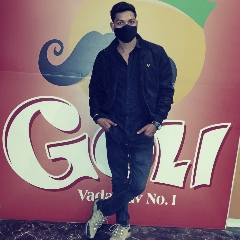Question 1 :
A hot plate of an electric oven connected to a 220 V line has two resistance coils A and B, each of 24 $\Omega$ resistance. What is the current when they are used in series?
Question 2 :
Two conducting wires of the same material and of equal lengths and equal diameters are first connected in series and then parallel in a circuit across the same potential
difference. What would be the ratio of heat produced in series and parallel combinations ?
Question 3 :
Which of the following terms does not represent electrical power in a circuit?
Question 4 :
How many 176 $\Omega$ resistors (in parallel) are required to carry 5 A on a 220 V line?
Question 5 :
What is the lowest total resistance that can be secured by combinations of four coils of resistance 4 $\Omega$, 8 $\Omega$, 12 $\Omega$, 24 $\Omega$?
Question 6 :
An electric lamp of $100\Omega$, a toaster of resistance $50\Omega$, and a water filter of resistance $500\Omega$ are connected in parallel to a 220 V source. What is the current through an electric iron connected to the same source that takes as much current as all three appliances?
Question 7 :
State true or false: When connected to the same source the current will flow more easily through a thick wire than thin wire.
Question 8 :
Several electric bulbs designed to be used on a 220 V electric supply line, are rated 10 W. How many lamps can be connected in parallel with each other across the two wires of 220 V line if the maximum allowable current is 5 A?
Question 9 :
How much heat is generated while transferring 96000 coulomb of charge in one hour through a potential difference of 50 V?
Question 10 :
How much energy is given to each coulomb of charge passing through a 6 Volt battery?
Question 11 :
An electric iron of resistance 20 Ω takes a current of 5 A. How much heat is developed in 30 s?
Question 12 :
An electric lamp of $100\Omega$, a toaster of resistance $50\Omega$, and a water filter of resistance $500\Omega$ are connected in parallel to a 220 V source. What is the resistance of an electric iron connected to the same source that takes as much current as all three appliances?
Question 13 :
<img style='object-fit:contain' src='https://teachmint.storage.googleapis.com/question_assets/cbse_ncert/61b19d74273b230584979c08.PNG' />
In the above image, Which material is the best conductor?
Question 14 :
<img style='object-fit:contain' src='https://teachmint.storage.googleapis.com/question_assets/cbse_ncert/61b19d73273b230584979c07.PNG' />
In the above image, Which among iron and mercury is a better conductor?
Question 15 :
A hot plate of an electric oven connected to a 220 V line has two resistance coils A and B, each of 24 $\Omega$ resistance. What is the current when they are used in parallel?
Question 16 :
Which uses more energy, a 250 W TV set in 1 hr, or a 1200 W toaster in 10 minutes?
Question 17 :
An circuit consist of a battery of three cells of 2V each , a $5\Omega$ resistor, an $8\Omega$ resistor, and a $12\Omega$ resistor and a plug key all connected in series. Also there is an ammeter to measure the current through resistors and voltmeter to measure the potential difference across $12\Omega$ resistor. What is the reading of the voltmeter?
Question 18 :
How many number of electrons constitute 1 coulomb of charge ?
Question 19 :
A copper wire has diameter 0.5 mm and resistivity of $1.6 \times 10^{-8} \Omega m$. How much does the resistance change if the diameter is doubled?
Question 20 :
How is a voltmeter connected in the circuit to measure the potential difference between two points?











































